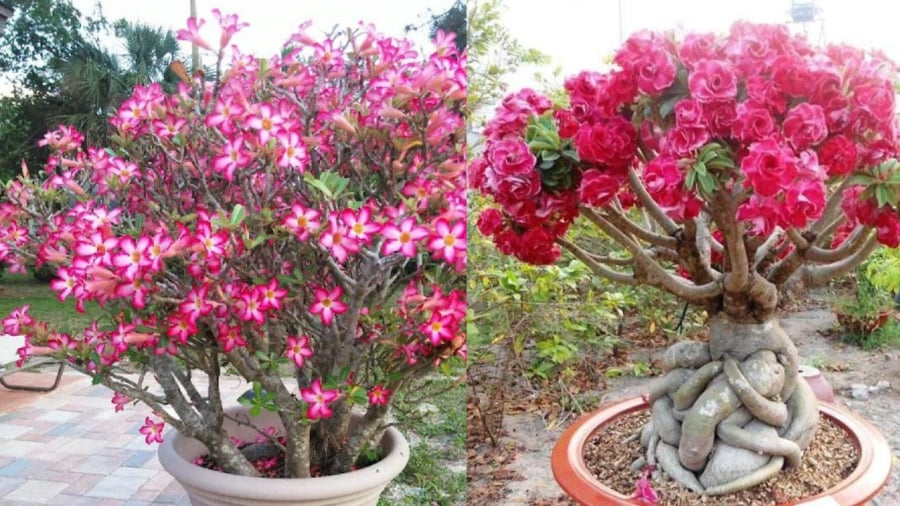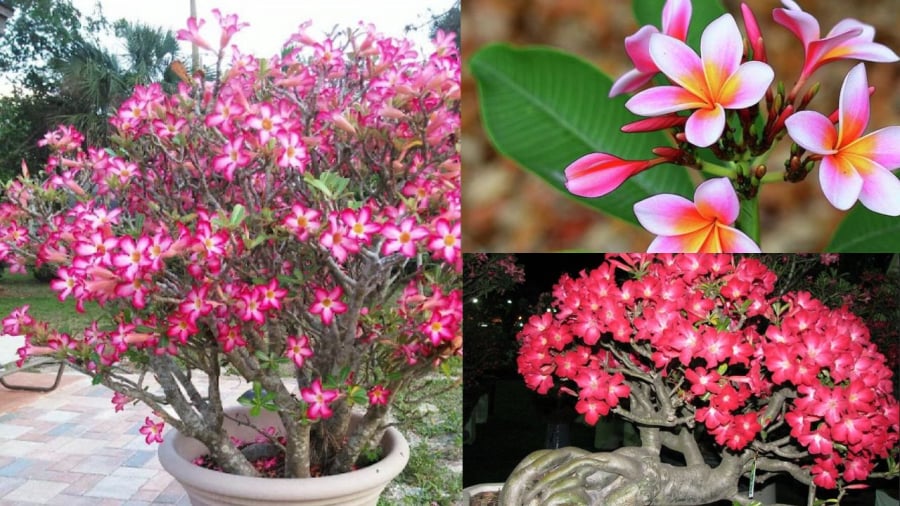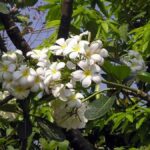Plumeria, or Frangipani, is a beloved ornamental plant, with the Thai variety being a popular choice for bonsai. Characterized by its sparse foliage and uniquely gnarled trunk, the Plumeria stands out for its aesthetic appeal. The flowers grow in long clusters, with each stem boasting a length of 30 to 50 cm, and require minimal care, making them a favored houseplant.
**What is the Significance of Growing Plumeria?**
Plumeria, especially the red and pink Thai varieties, hold various symbolic meanings. In Hawaii, Plumeria leis are worn to signify good luck, joy, and positivity. For Hindus in India, the flowers are sacred, representing devotion and offerings to the deities. Plumeria is also traditionally worn during important ceremonies, especially weddings. The flower symbolizes immortality and is believed to represent the sweetness of a woman in Mexico, where the trees are native.

Plumeria: A Harbinger of Good Fortune
Plumeria’s ability to thrive in harsh environments symbolizes strength and resilience. The flower also signifies love and luck. Displaying Plumeria in front of a house is believed to bring peace, prosperity, and good fortune to the household. The abundant blooms of Plumeria symbolize wealth and prosperity.
**Pay Attention to Location and Other Considerations When Growing Plumeria**
When growing Plumeria, it is crucial to consider its unique growth characteristics. While Plumeria is not demanding in terms of soil type and fertilization, it thrives in sunny and bright conditions. If your home lacks sufficient sunlight, it is best not to plant Plumeria, as inadequate sunlight will result in fewer blooms, and stunted growth, bringing bad luck to the homeowner.
The ideal location for growing Plumeria is the sunniest area of your home, typically the front of the house, where it can receive ample sunlight and ventilation. When cultivating Plumeria as a bonsai, consider pairing it with boulders and miniature landscapes, as they complement each other well. Occasionally, you can bring the plant indoors, but remember to regularly place it outdoors to soak up the sun and natural light.

Abundant Sunlight is Key to Plumeria’s Blooming
When caring for Plumeria, avoid overwatering and excessive fertilization, as this will promote leaf growth at the expense of flowers. If the plant produces too many leaves, consider root pruning to limit nutrient uptake and encourage blooming. Don’t be afraid to prune the roots, as this is a natural part of the Plumeria’s growth cycle. About two months before the Lunar New Year, it is common to prune the leaves and roots to encourage flowering during the festive season.
Plumeria comes in a variety of colors, so you can choose a shade that aligns with the homeowner’s birth sign. Growing Plumeria in front of your home also conveys a message of hospitality to guests.
If your home severely lacks sunlight, it is best to avoid growing Plumeria, as they require ample light to produce flowers. Additionally, refrain from regularly watering your Plumeria, as this can lead to root rot and hinder blooming.
*Disclaimer: This information is for reference only.
The Everlasting Blooms: Unveiling the Secrets of Three Longevity Plants that Thrive with Minimal Care
Here are three types of flowering plants that are incredibly low-maintenance and thrive with minimal care. Despite your laziness, these plants will flourish and produce large, vibrant blooms year after year. Not only that, but they also hold significant feng shui value, bringing positive energy and good fortune to your space.
The Three Trees of Fortune: Unlocking Prosperity and Protection.
In feng shui, it is believed that certain plants can bring about positive energy and prosperity when placed in the right areas. However, there are three types of plants that are considered inauspicious to be planted in the front of the house, as they are believed to bring bad luck and drive away wealth. These plants are best suited for the backyard, where they can act as a safeguard for your fortune and blessings.
The Surprising Benefits and Cultural Significance of Growing Gardenia: A Step-by-Step Guide
The frangipani, or Plumeria, is an iconic and beloved ornamental tree in Vietnam, renowned for its exquisite beauty and delicate fragrance. Its popularity extends far beyond the borders of Vietnam, with its graceful presence adorning gardens and landscapes worldwide. But there’s more to this enchanting tree than meets the eye. From its intricate cultural significance to its versatile practical applications, the frangipani holds a special place in the hearts of many. So, join us as we delve into the captivating world of the frangipani, exploring the secrets of its cultivation, the depth of its symbolic meaning, and the fascinating array of purposes it serves.






































